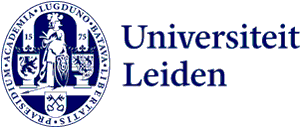PhD research: Was there already Dutch-Dutch and Belgian-Dutch in the past?
What developments preceded modern Standard Dutch? PhD candidate Iris Van de Voorde conducted research on ‘pluricentricity’, or the idea that language norms arise in different places and spread outwards from there. PhD defence on 19 April.

Anyone who crosses the Belgian-Dutch border will immediately be aware that Dutch has its own rules on each side of the border. According to Van de Voorde, this is because language norms are not created in just one place, but differ per country. ‘In concrete terms, this means that in the Dutch language area there are centres in the Netherlands and in Belgium,’ she explains. ‘And there’s a third centre for Dutch in Suriname.’
460.000 words
To be able to research this, Van de Voorde, helped by her PhD supervisors, student assistants and volunteers, compiled a digitally searchable corpus of around 460,000 words. The texts in the corpus cover the period from the sixteenth to the eighteenth century and represent different genres, from printed pamphlets to hand-written official texts. ‘These different genres are important,’ Van de Voorde explains. ‘If people want to study language use in the 21st century in two hundred years’ time, you want them to look not only at the language use of authors such as Remco Campert or Hugo Claus; you want them to examine a wider variety of texts to gain as complete a picture as possible of language use.’ The corpus also covers different regions. Van de Voorde included in the corpus texts from Holland, Zeeland and the Belgian regions of Brabant and Flanders.
In Belgium, language norms are mainly formed in Brabant, after which they spread out over the rest of present-day Flanders. In the Netherlands, it is Holland that has the key role. This means that two varieties of Dutch (Dutch-Dutch and Belgian-Dutch) have developed, each of which has its own specific characteristics. This situation can be traced back to the twentieth century. Researchers questioned whether there might have been two separate varieties even earlier than this. ‘Earlier research found indications that there may have been two different centres at an earlier date, from which norms disseminated further,’ Van de Voorde explains. ‘My research aimed to examine how pluricentricity developed historically for Dutch, and whether this existed earlier than the twentieth century.’
If people want to study language use in the 21st century in two hundred years’ time, you want them to look not only at the language use of authors such as Remco Campert or Hugo Claus
Complex reality
Van de Voorde studied six variables in the texts, including when did the ‘ae’ in the Dutch word daer change to an ‘aa’? When was the useless ‘e’ at the end of ‘ik geve’ dropped to form ‘ik geef’? A more important question was whether the hypothesis held that innovations spread from Holland to Zeeland and from Brabant to Flanders. In that case, there would indeed be two regions, each with its own centre where language norms originated.
‘We established that the linguistic reality is too complex to be explained as pluricentricity,’ Van de Voorde says. For the ‘aa’ sound, it can indeed be seen in the eighteenth century that this had spread from Holland to Zeeland, while the Brabant and Flanders regions still kept to the ‘ae’. Most variables showed a different regional pattern.
‘Contributions to linguistics’
An interesting possibility for future research is to take regional variation as the starting principle. Van de Voorde will probably follow this research from behind the scenes. ‘I want to carry on working with languages, but am for the time being going to step out of the academic world.’ She looks back positively on the past few years. ‘I’m really fascinated by Dutch so I’m happy to have written a book and that researchers from Brussels and Leiden have together managed to construct a large corpus spread over different centuries, different regions and different genres. Before this, no such corpus was available. In a certain sense, I have now done something that will continue to exist for centuries to come, and I’ve made a contribution to Dutch linguistics. I’m really happy about that.’
Iris Van der Voorde defends her PhD dissertation on Tuesday 19 April. Her PhD research was carried out at Leiden University and the Vrije Universiteit Brussels (co-tutelle).
